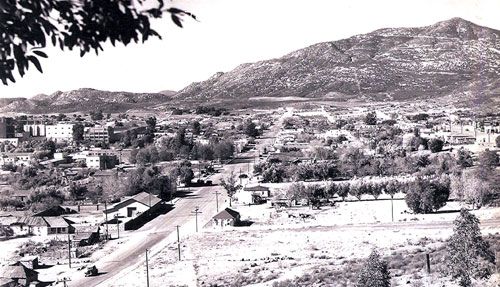History

Tecate: Unique inhabited by Mexicans
During the second decade of the twentieth century, three events modified the economic dynamics of Tecate and its inhabitants:
- The arrival of the railway
- The construction of the national road and
- The municipality of Tecate
On March 1, 1917, some neighbors gathered in Tecate to show Colonel Esteban Cantú the reasons why they considered this town to be a Municipality.
More by administrative strategy of his government, than at the request of the Tecatenses, on March 8, 1917 Cantu responded to the request and issued a decree that adds Tecate and Tijuana to the municipalities of the Northern District. As municipal president of the newly created municipality of Tecate was Roque Santana Sandoval and as governor Carlos E. Bernstein.
Traders and businessmen in Tecate
Esteban Cantú arrived in Mexicali to support federal troops and political chief Celso Vega in the fight against arms rebels in 1911. While in the center of the country the struggle for power faced the various revolutionary factions, Lieutenant Colonel de Cavalry Esteban Cantú took the government of the Northern District of Baja California, a position in which he remained from December 1914 to August 18, 1910. During that time he created a solid financial base with which he paid employees and soldiers who helped him maintain a favorable public order for growth and economic expansion, an environment that he used to mediate on his own and favor the formation of some local capitals, among others those of the Santana Sandoval brothers, Bernstein Riveroll and Aldrete Palacio.
The Santana Sandoval brothers were originally from Chiquilistlán, Jalisco; With the beginning of the Revolution they saw the need to leave their town and look for new horizons, so they arrived at Parral, Chihuahua, where they found work in mining.
There they learned to drill rocky mantles and dynamite manipulation trades that would allow them to migrate to San Diego when hookers offered them work on the construction of the railroad. Roque, Ignacio and Eufrasio moved to California. Apparently, the work plans were modified when they arrived at their destination, because they did not work on the railroad, but rather on the construction of dams. On their tours they met Tecate, eventually decided to quit their job and migrate to Tecate.
Upon arrival in 1913, Tecate had 116 inhabitants, mostly dedicated to agriculture. There was also a canteen “La flor de Jalisco”, owned by a Spaniard. Eufrasio Santana found work in that canteen, while his brother Ignacio installed a grocery store, with butcher shop and also a canteen. By the 20’s Eufrasio Santana had acquired the canteen “La flor de Jalisco”, which changed its name to Cantina Santana, which by then was already a hotel, restaurant, ballroom. For his part, Roque also had a “Tecate Club” canteen, located just in front of his brother’s.
